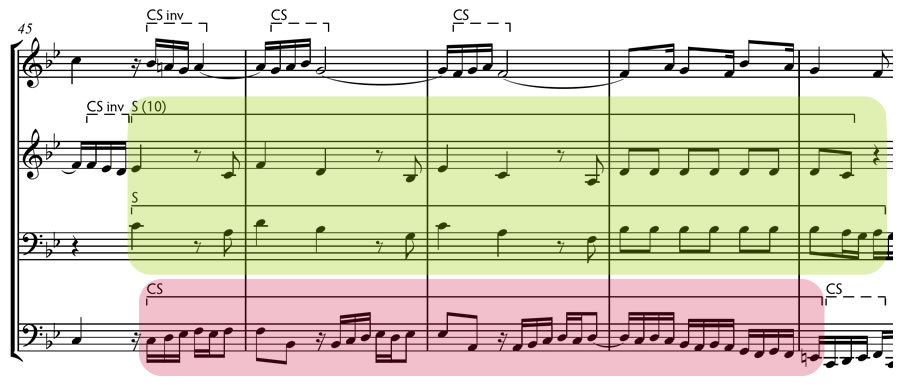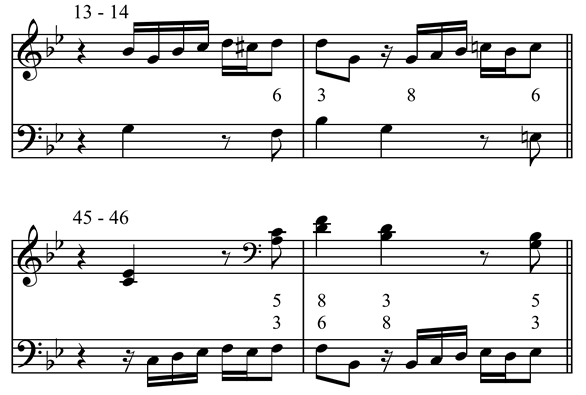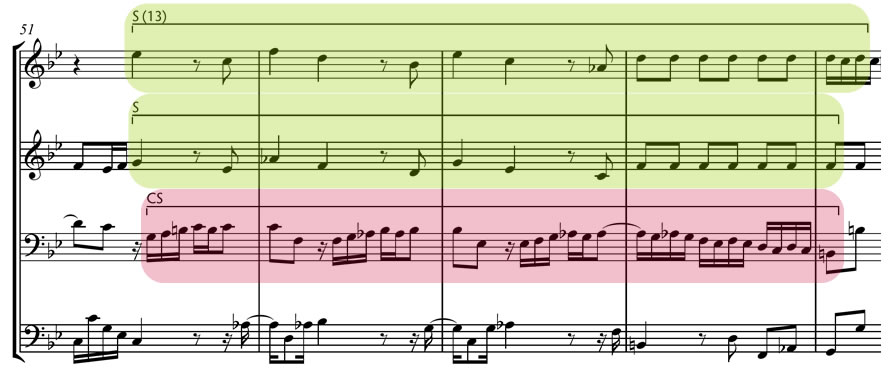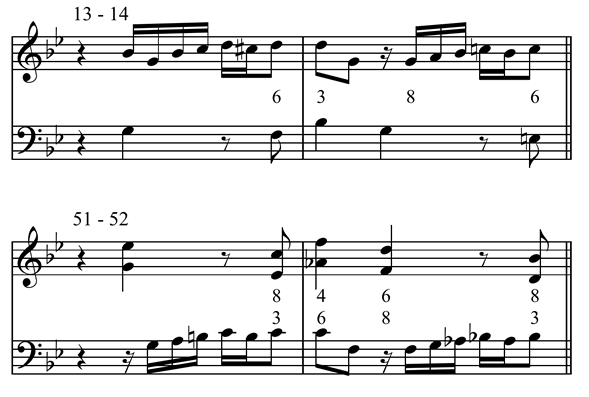Invertible Counterpoint in Bach's Fugue BWV 885
José Rodríguez Alvira
After the inversions...
When Bach creates a subject and countersubject invertible at the 10th, 12th and 13th he also has the possibility of presenting the subject and countersubject in two voices at the same time at the distance of thirds and sixths. This is precisely what Bach will do after the discussed inverted passages. In measures 45 to 48 the subject appears in the alto inverted at the 10th and at the 8th in the tenor with the countersubject in the bass:

Inversion at the 10th Table:
| 1 | 2 | 3 | 4 | 5 | 6 | 7 | 8 | 9 | 10 |
| 10 | 9 | 8 | 7 | 6 | 5 | 4 | 3 | 2 | 1 |
Inversion at the 8ve Table:
| 1 | 2 | 3 | 4 | 5 | 6 | 7 | 8 |
| 8 | 7 | 6 | 5 | 4 | 3 | 2 | 1 |
- in the alto and bass: sixths in fifths and thirds in octaves (inversion at the 10th)
- in the tenor and bass: sixths in thirds, thirds in sixths and octaves in octaves (inversion at the 8ve)

In measure 51 the subject is presented by the soprano and the alto. The countersubject appear in the tenor:

The alto uses inversion at the 8th. The soprano uses inversion at the 13th. Here is the table for this type of inversion:
| 1 | 2 | 3 | 4 | 5 | 6 | 7 | 8 | 9 | 10 | 11 | 12 | 13 |
| 13 | 12 | 11 | 10 | 9 | 8 | 7 | 6 | 5 | 4 | 3 | 2 | 1 |
Checking the intervals between the soprano and the alto we see sixths that invert as octaves and thirds as fourths according to the preceding table:

It can also be explained as a double inversion: an inversion at the 10th followed by an inversion at the 8th. Here is the process step by step:
We start with the tenor and bass from measure 51:

We lower the top voice a 10th and raise the lower voice an 8ve (inversion at the 10th):

Now we do an inversion at the 8th and we have the soprano voice of measure 51:
